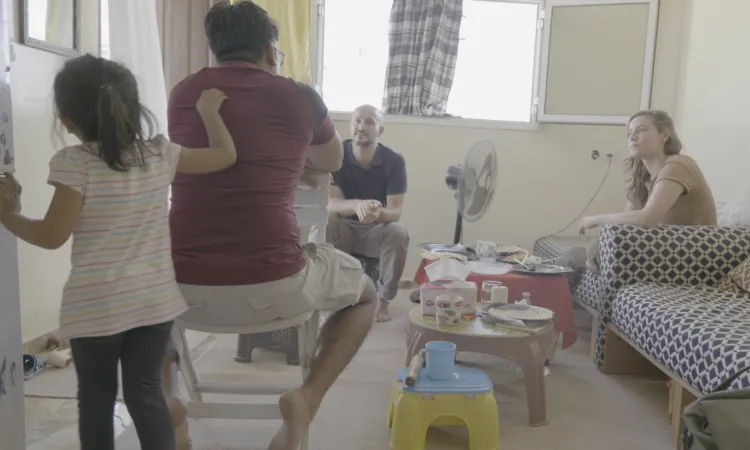“Could you say that again?”
Farsi, Urdu, Punjabi, Turkish and Arabic! Conducting interviews with respondents whose language I do not master brings with it specific challenges. Hence, the need for a translator whose role in my research is essential but also complex.
Linguistic expertise
The translators I worked with on this project are David, Araa, Tony, Hasnae and Reda. They have Moroccan, Syrian, Afghan, and American backgrounds. You can read more about them in the About Us. Their work is invaluable in bridging the language gap. But conducting an interview together requires coordination. For this reason, I prepared a presentation about the research, opened the conversation about expectations and role division. This included going through the interview guide in advance. I also found it important to meet with the translator at least 30 minutes before the interview to go over the specific interview. This coordination was essential to maintain the authenticity of the respondents' stories.
Interruptions
Although I initially hesitated to interrupt the respondent or translator for clarification, fearing that this would disrupt the natural rhythm of the exchange, I decided to do so anyway. After a few interviews, I noticed that I could ask too few appropriate follow-up questions. This was easier with some respondents who gave more concise answers than respondents who expressed themselves at length. By interrupting and asking for clarification or a more in-depth explanation, I could better understand the shared perspectives. At one point, a translator even joked about how I managed to interrupt in such a diplomatic and friendly way.

Photo taken by Shirley van der Maarel during the interview.
Interactions
When working with a translator, it is equally important to discuss the social and cultural dimensions in advance. A translator will also interact with a respondent before, during, and after the interview. After all, a conversation is not only about language but also about social and cultural interactions. That is why I also discussed with the translators how we can deal with discomfort. I shared that respondents will probably be curious about who they are and that they should reflect well in advance on what they do and do not want to share. I also took them through what I do and do not share and why this is the case. Setting boundaries and living create clarity.
Translators have sometimes mentioned that my questions can come across as too direct. Certainly, questions that were about, for example, finances, how they met their spouse or guardianship caused tension. Instead of omitting the question, I reformulated it or provided more context so that the translator dared to ask the question. Translators, therefore, function as both linguistic mediators and cultural interpreters.


